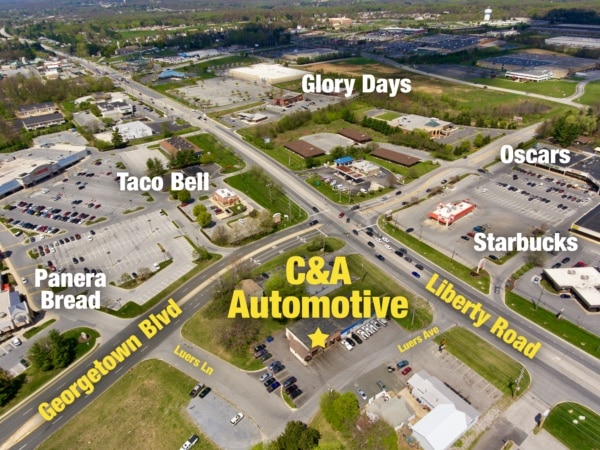History of Tires
Humans invented the wheel hundreds of thousands of years ago, and yet it’s still one of our best ideas to date. Of course, we’ve come a long way from the primitive wooden wheels, which were uncomfortable and sometimes unpredictable. Wooden or metal wheels were used until the late 1800’s, however, because early rubber didn’t hold shape well and varied greatly depending on the outdoor temperature. It wasn’t until the development of the vulcanization process, during which rubber is heated with sulfur, that rubber tires became a viable option. This process transformed sticky raw rubber into a firm and pliable material, making it an ideal substance with which to make tires.
The first rubber tires were strong and excellent shock absorbers because they were made of solid rubber. Unfortunately, this also made them heavy and uncomfortable to ride on, which led to the production of pneumatic, or air inflated tires. These air filled tires helped to create a smoother ride and to improve traction; consequently, they were used for over 50 years in the form of bias ply tires. Within a ply tire is an inner tube filled with compressed air, an outer casing, and layers of plies. These plies were made of rubberized fabric cords that were arranged in a crisscross pattern across the outer casing.
Modern radial tires were first developed in the 1940’s and evolved from bias ply tires. Unlike their predecessors, radial tires have a belt of steel that reinforces the outer casing and their layers of plies that radiate at a 90 degree angle from the wheel rim. Additionally, the ply cords are now made of much sturdier materials, providing modern day tires with longer tread life and better steering control.
How Many Tires Should I Buy?
The best rule of thumb when purchasing new tires is that they should all be as identical as possible; otherwise, they might not all have the same response time or accuracy. It’s ideal when all four tires wear out at the same time, but sometimes certain tires wear out faster than others. So what happens when you only have to buy one or two tires?
If you only need to replace one tire, try to find one that is an exact match to your other three. In other words, try to find the same brand, speed rating, line, and size of your other tires or as close as you can come. Don’t be tricked into buying a cheaper tire that doesn’t match what you have, you’ll only be causing yourself more problems down the line.
When replacing a pair of tires, it’s still ideal to find ones that are identical to your existing tires. If you can’t find an exact match, try to find tires of the same size and type. While your tires are being replaced, make sure to ask why these tires wore out faster than your other two. The answer probably lies within your suspension, and simply installing new tires will not solve the problem. To prevent a second pair of tires wearing out, make sure you have any bent or worn suspension components replaced.
Finally, if you need a new set of tires, you’re options will be more flexible. Below is a tire finder, use it to find a set of tires that best fits your needs. If you need help making your decisions, feel free to call or make an appointment, our service and repair center is located in Eldersburg, MD. C&A Automotive has highly trained technicians who would be happy to help you pick the perfect tire.
Decoding Your Vehicle’s Tire Size
A major factor to consider when purchasing new tires is their size—in order to maximize performance, they need to be the correct size for your vehicle. There are several factors that determine tire size, including their width, height, and diameter, how much weight they can carry, and their speed ratings. You can find all of this information in your driver’s manual, the driver’s side door, or the sidewall of your tires. Below is a list of terms that will help you de-code this information so that you can find the best tire size for your vehicle.
On the sidewall of your tires, a ‘P’ indicates that it is a passenger or performance tire, while a ‘LT’ indicates that it’s a light-truck tire. The Aspect Ratio tells you how tall your tire is–the bigger the number the taller the tire. If you have a passenger tire, its aspect ratio will probably be somewhere between 65 and 80. Next is the load index, which indicates how much weight the tire can support. Take the number listed on the tire and look it up on a load index chart to see how much weight it can carry.
Similarly, the speed rating tells you how well a particular tire reaches and maintains certain speed. The higher the speed rating, the better handling the tire will provide. Never install tires with different speed ratings on your vehicle—it will lead to serious handling problems.
A tire’s temperature grade indicates its ability to resist heat and is graded from highest to lowest: A, B, and C. All three pass federal safety requirements but A is the coolest, B is warmer, and C meets the minimum requirement. Likewise, a tire’s traction grade suggests its ability to stop on wet surfaces. Again, the grades from highest to lowest are AA, A, B, and C.
All of these factors should be considered with determining the correct tire size for your vehicle. If you’re having trouble, call or make an appointment – one of our technicians will be waiting to help! Our service and repair center is located in Eldersburg, MD.














